#HumanMigration
Explore tagged Tumblr posts
Text
The earliest human migrations began with the spread of Homo erectus out of Africa about 1.75 million years ago, followed by Homo sapiens who colonized all of Africa and then moved out of the continent about 70,000 years ago, reaching most parts of the world by 40,000 years ago.
2 notes
·
View notes
Text
The Pros of Migration Explained. Why Migration Should Exist
Migration has been a natural and essential part of human history. People move for many reasons, and migration brings both challenges and opportunities for individuals and societies.

Here is a clear breakdown of why migration should exist and how it can be beneficial:
Demographic Support. Many wealthy countries do not have enough workers. Migration helps balance demographics, supporting pension systems and healthcare services. Many countries rely on immigrant nurses, doctors, and caregivers.
Economic Benefits. Migrants often fill labor shortages, especially in industries like healthcare, construction, agriculture, and tech. Many immigrants start businesses or contribute new ideas, helping economies grow. Also, people often move to find better jobs, escape poverty, or send money home. This helps raise living standards for families in poorer countries.
Cultural Exchange and Diversity. Migration increases cultural diversity, bringing new languages, cuisines, traditions, and ideas. Diverse societies can become more resilient, innovative, and globally connected. Studying foreign cultures and languages broadens horizons and unites.
Humanitarian Reasons. People flee war, persecution, violence, or disasters. These are refugees or asylum seekers who need protection. Offering them safety is part of international human rights obligations and basic human decency. The 1951 Refugee Convention obliges countries to protect those fleeing persecution.
People should have the freedom to move in search of a better life.
Migration is not without challenges — it must be well-managed. Governments need policies to ensure integration, fair labor rights, and border security. But stopping migration completely would ignore economic realities and humanitarian needs. Migration should exist because it is natural, necessary, beneficial. It supports economies, saves lives, enriches cultures, and reflects our shared human history of movement, survival, and growth. The goal should be to make it safe, legal, and fair for everyone. Remember, we are all migrants, or our ancestors were or are.
#Migration#Migrants#Immigration#Immigrants#TheProsofMigration#MigrationMatters#HumanMigration#GlobalMovement#CulturalDiversity#EconomicGrowth#SupportMigration#MigrationBenefits#RefugeeSupport#MigrationRights#SharedHumanity#MigrationAndGrowth#MigrationPolicy#MigrationIsNatural#DonaldTrump
0 notes
Text

She had blond hair, high cheekbones, and wore clothing reminiscent of ancient Celts—yet she was found buried beneath the sands of China’s vast Taklamakan Desert. Known as the Beauty of Loulan, this remarkably well-preserved mummy is over 3,800 years old, and her discovery has rewritten what we thought we knew about early migration, trade, and cultural exchange.
Unearthed in the early 1980s near Loulan, in the Xinjiang region of western China, the mummy shocked archaeologists. Not only was she astonishingly intact, but her facial features, braided blond hair, and woven wool garments seemed distinctly European. DNA testing later confirmed that she and other mummies from the region were of Western Eurasian origin—suggesting that people were moving across continents and connecting cultures far earlier than previously believed.
The Beauty of Loulan wasn’t alone. Hundreds of similar mummies have been discovered in the Tarim Basin, many with Caucasian features, Indo-European ancestry, and garments made from tartan-like fabrics. These findings point to the existence of ancient Indo-European-speaking peoples, possibly related to the Tocharians, who lived and traded along what would later become the Silk Road—long before it was formally established.
Their presence challenges the long-held belief that early China was culturally and ethnically isolated. Instead, it reveals a much more interconnected ancient world, where ideas, goods, and even people moved across great distances through harsh landscapes like the Taklamakan Desert.
Despite being thousands of years old, the Beauty of Loulan remains hauntingly human—her eyelashes still visible, her expression serene. She stands as a silent testament to forgotten journeys, lost cultures, and the complexity of early civilisation.
Follow for more History Facts!
#HistoricalFacts #HistoryFacts #USAHistory #TimeTravel #DidYouKnow #AncientChina #Mummies #LoulanBeauty #HumanMigration #LostCivilisations
Source: Historical Facts
Facebook
3 notes
·
View notes
Text
[Free Book] The Prehistory of Human Migration - Human Expansion, Resource Use, and Mortuary Practice in Maritime Asia
Readers may be interested in this Open Access volume edited by Ono and Pawlik looking at the prehistory of human migration in Asia. #southeastasianarchaeology #openaccess #humanmigration
via IntechOpen, 10 July 2024: Readers may be interested in this Open Access volume edited by Ono and Pawlik looking at the prehistory of human migration in Asia. The Prehistory of Human Migration – Human Expansion, Resource Use, and Mortuary Practice in Maritime Asia presents the current state of archaeological research on the migration and expansion of the first modern humans (Homo sapiens) into…

View On WordPress
0 notes
Photo

Brazil is bringing back visa requirements for American travelers The Brazilian foreign ministry has announced it will resume entry visa requirements for visitors from the US, Japan, Australia, and Canada.Read more... https://qz.com/brazil-passport-visa-tourism-us-japan-canada-australia-1850224963
#travelvisa#hospitality2crecreation#humanmigration#presidencyofjairbolsonaro#jairbolsonaro#Diego Lasarte#Quartz
0 notes
Photo
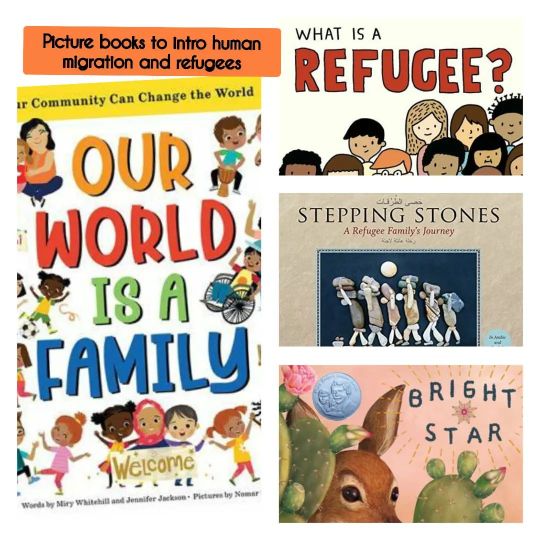
Use these wonderful, clear but nuanced picture books to introduce refugees and human migration to your littles! Four of my favorites: ❤️ Our World is a Family by Miry Whitehill and Jennifer Jackson: This new title explores how we are all connected, and the reasons some people move to a new community. As the book explains, "People everywhere want to feel safe and loved and important. But there are places in the world where it stops being safe for people to live. Sometimes it becomes so unsafe that children can't go to school and parents can't go to work and no one can play outside. When that happens, people might need to leave home and move to another part of the world." The pictures move with the gentle text, showing many families traveling in different ways to new homes, missing their old lives, adapting to their new ones, and families helping each other feel welcome with gestures of friendship and community. Illustrations are warm and inclusive. ❤️ What is a Refugee? by Elise Gravel: While the last title shows how people should ideally respond to refugees, this title, just as empathetic and clear, goes a little deeper, showing the varied reasons refugees must leave, and how other countries and people sometimes respond in less than welcoming ways - but also how we all can help. ❤️ Stepping Stones: a Refugee Family's Journey by Margriet Ruurs and Nizar Ali Badr: This book is the result of a partnership between the author and Syrian artist Badr, who makes his expressive images by arranging and photographing stones. In Arabic and English, the lyrical text and art tells the story of a displaced family journeying to a new life. Grows empathy! ❤️ Bright Star by Yuyi Morales: This Caldecott honorée and Belpré winning title is a poetic, art-infused metaphorical tale of a deer separated from her mother, which only at the end of the book to we discover is a metaphor for children at the US-México borderlands, child refugees separated from their parents, refused entry to safety together but carrying their love in their hearts. Textured, luminous mixed-media illustrations captivate readers from page one. #refugeeswelcome #refugees #humanmigration #immigration #books https://www.instagram.com/p/Cf5Jws7sIJU/?igshid=NGJjMDIxMWI=
0 notes
Text
The 'Trump effect' on immigration is waning. Will a surge of foreign workers help tame inflation? One issue including gas to America’s inf... Read the rest on our site with the url below https://worldwidetweets.com/the-trump-effect-on-immigration-is-waning-will-a-surge-of-foreign-workers-help-tame-inflation/?feed_id=157224&_unique_id=62503bf83393b #a #article_normal #CampEIndustryNewsFilter #ContentTypes #corporate #CorporateIndustrialNews #Crime #CrimeLegalAction #DomesticPolitics #epidemics #ExecutiveBranch #FactivaFilters #generalnews #GovernmentBodies #governmentpolicy #Health #HumanMigration #illegalimmigration #industrialnews #InfectiousDiseases #internationalrelations #legalaction #MedicalConditions #n #NA #NovelCoronaviruses #outbreaks #OutbreaksEpidemics #political #PoliticalGeneralNews #politics #PoliticsInternationalRelations #regulation #RegulationGovernmentPolicy #RespiratoryTractDiseases
#Business#a#article_normal#CampEIndustryNewsFilter#ContentTypes#corporate#CorporateIndustrialNews#Crime#CrimeLegalAction#DomesticPolitics#epidemics#ExecutiveBranch#FactivaFilters#generalnews#GovernmentBodies#governmentpolicy#Health#HumanMigration#illegalimmigration#industrialnews#InfectiousDiseases#internationalrelations#legalaction#MedicalConditions#n#NA#NovelCoronaviruses#outbreaks#OutbreaksEpidemics#political
0 notes
Photo
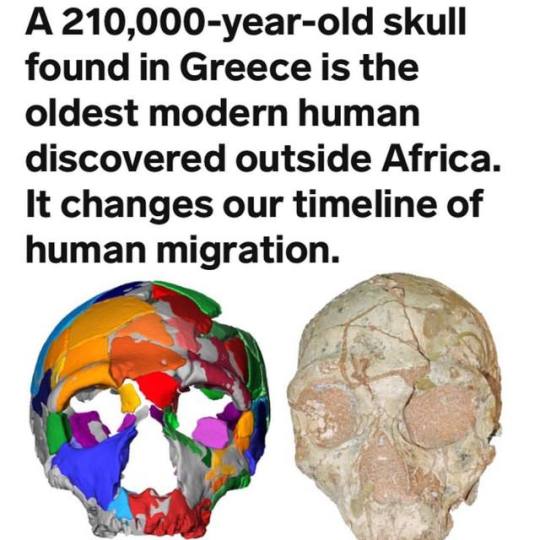
#fascinating #humanhistory #anthropology #technology #humanmigration https://www.instagram.com/p/BzxtxCfp_O9/?igshid=18vg3qdsmey5f
0 notes
Photo
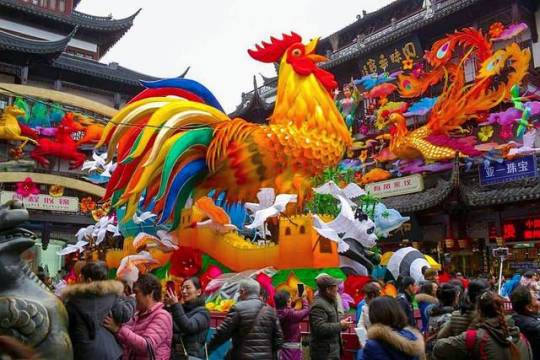
The largest #humanmigration happens every year in #China🇨🇳 during what's called #springfestival or the #chinesenewyear. People #save up all year for flights to see family and go #homefortheholidays. This year was the year of the #rooster #yearoftherooster #springfestival (at Yu Garden)
#homefortheholidays#chinesenewyear#china🇨🇳#humanmigration#springfestival#save#rooster#yearoftherooster
0 notes
Photo
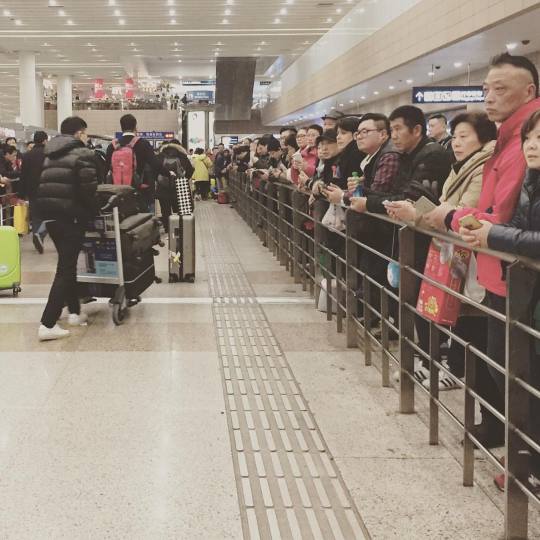
Waiting for @joewarbs to arrive with all of China at the airport. #expatlife #thisischina #joeinchina #welcometoshanghai #somanypeople #cny #chinesenewyear #humanmigration (at Shanghai Pudong International Airport)
0 notes
Text
[Paper] Abrupt onset of intensive human occupation 44,000 years ago on the threshold of Sahul
New archaeological evidence shows intensive human occupation in Timor 44,000 years ago, suggesting a major migration phase bypassing Timor for New Guinea. #southeeastasianarchaeology #HumanMigration #TimorLeste #PrehistoricSettlement
via Nature Communications, 22 May 2024: Paper by Shipton et al. describes new evidence of intensive human occupation in Timor-Leste around 44,000 years ago, marking a significant migration phase. The Laili site reveals that early humans likely bypassed Timor in initial migrations to Australia, instead using New Guinea. This discovery challenges previous theories and highlights a major…

View On WordPress
0 notes
Photo

Citizenship-by-investment programs are on the rise in Africa African economies looking to attract fresh investments are turning to innovative programs that offer residence and dual citizenship opportunities to investors with deep pockets.Read more... https://qz.com/citizenship-by-investment-programs-are-on-the-rise-in-a-1850183218
#henley26partners#foreigndirectinvestment#economy#immigration#nationalitylaw#humanmigration#immigrantinvestorprograms#business2cfinance#politicalphilosophy#travelvisa#economiccitizenship#residency#nationality#Seth Onyango#bird story agency#Quartz
0 notes
Photo

Opinion: The simple way to ease the labor shortage is to raise limits on legal immigration The US is going through a historic labor... Read the rest on our site with the url below https://worldwidetweets.com/opinion-the-simple-way-to-ease-the-labor-shortage-is-to-raise-limits-on-legal-immigration/?feed_id=94189&_unique_id=6175652295cdf #a #article_opinion #CampEExecutiveNewsFilter #CampEIndustryNewsFilter #commentary #CommentaryOpinion #ContentTypes #corporate #CorporateIndustrialNews #FactivaFilters #GeneralLaborIssues #generalnews #governmentpolicy #HumanMigration #industrialnews #internationalrelations #labor #LaborPersonnelIssues #n #NA #Opinion #personnelissues #political #PoliticalGeneralNews #politics #PoliticsInternationalRelations #regulation #RegulationGovernmentPolicy
#a#article_opinion#CampEExecutiveNewsFilter#CampEIndustryNewsFilter#commentary#CommentaryOpinion#ContentTypes#corporate#CorporateIndustrialNews#FactivaFilters#GeneralLaborIssues#generalnews#governmentpolicy#HumanMigration#industrialnews#internationalrelations#labor#LaborPersonnelIssues#n#NA#Opinion#personnelissues#political#PoliticalGeneralNews#politics#PoliticsInternationalRelations#regulation#RegulationGovernmentPolicy
0 notes
Link
Exciting and breaking news! The remains of a one-year-old boy who died 12,600 years ago in what’s now Montana -- America's only known skeleton from the Clovis culture -- are giving up exceptional information about the origins of Native Americans on both continents of the New World. Read on to learn more! #archaeology #anthropology #nativeamerican #humanmigration #genome #clovis #montana #science #news http://click-to-read-mo.re/p/5qn8
2 notes
·
View notes
Text
Where everyone in the world is migrating—in one gorgeous chart By Nick Stockton
It’s no secret that the world’s population is on the move, but it’s rare to get a glimpse of where that flow is happening. In a study released in today’s Science, a team of geographers used data snapshots to create a broad analysis of global migrations over 20 years. The study was conducted by three geographic researchers from the Wittgenstein Centre for Demography and Global Human Capital in Vienna. The researchers presented their data in five-year increments, from 1990 to 2010. Their research is unique, because it turned static census counts from over 150 countries into a dynamic flow of human traffic. Migration data is counted in two ways: Stock and flow. “The stocks are the number of migrants living in a country,” says Nikola Sander, one of the study’s authors. Stock is relatively easy to get—you just count who is in the country at a given point of time. Flow is trickier. It’s the rate of human traffic over time. Keeping accurate account of where people are moving has stymied the UN, and researchers and policy-makers in general, for a while. The European Union keeps good track of migrant flows, but elsewhere the data are sparse. Static measurements are plentiful, but it is hard to use them to get a picture of how people are moving on a broad scale, because each country has its own methodology for collecting census data. Last year, however, the UN brought stock data from nearly 200 countries into harmony by erasing the methodological seams between them. To turn this stock data into five-year flow estimates, the researchers used statistical interpolations from stock data from the UN, taken mostly from 10-year country censuses, but supplemented with population registers and other national surveys. It’s not the poorest who migrate the most
While the results of the migration study aren’t particularly groundbreaking, there are two interesting insights: 1) Adjusted for population growth, the global migration rate has stayed roughly the same since around since 1995 (it was higher from 1990-1995). 2) It’s not the poorest countries sending people to the richest countries, it’s countries in transition—still poor, but with some education and mobility—that are the highest migratory contributors. “One of the conclusions they make in the paper, is the idea as countries develop, they continue to send more migrants, and at some point they become migrant-receiving regions themselves,” says Fernando Riosmena, a geographer from the University of Colorado, who did not contribute to this research, but is collaborating with one of the authors on a future paper. A few other noteworthy results: 1) The largest regional migration is from Southeast Asia to the Middle East. This is largely driven by the huge, oil-driven, construction booms happening on the Arabian Peninsula. 2) The biggest flow between individual countries is the steady stream from Mexico to the US. (In fact, the US is the largest single migrant destination) 3) There’s a huge circulation of migrants among sub-Saharan African countries. This migration dwarfs the number leaving Africa, but the media pay more attention the latter because of the austerity-driven immigration debates in Europe. Explore the world of migration
The data aren’t perfect. Riosmena points out that in countries that especially dislike migrants, like the US and Europe, numbers are often underreported. Still, he says, the data are a very good indication of the general trends. Also, amateur data sleuths be warned: Because these flow estimates are taken from 10-year static counts, they cannot be compared to the annual migrational flows that the UN publishes (which, as mentioned above, cannot be used to compare between countries). Sander says she hopes her data will change the way other researchers approach migration. “Inside the discipline, we hope that it’s going to be the basis for subsequent analysis of the impact of migration on population, on economies, on aging.” Sander and her colleagues have lined their data up with global remittance flows, and are analyzing what kind of patterns they can find therein. You can explore for yourself how regional flows have changed over the past 20 years with this awesome interactive, from Sander and her co-authors, Guy J. Abel & Ramon Bauer.
1 note
·
View note
Text
[Paper] Prehistoric human migration between Sundaland and South Asia was driven by sea-level rise
via Communications Biology, 04 February 2023: This study traced prehistoric sea-level rise in Southeast Asia to human migrations. #sealevel #humanmigration #southeastasia
via Communications Biology, 04 February 2023: This study traced prehistoric sea-level rise in Southeast Asia to human migrations. Rapid sea-level rise between the Last Glacial Maximum (LGM) and the mid-Holocene transformed the Southeast Asian coastal landscape, but the impact on human demography remains unclear. Here, we create a paleogeographic map, focusing on sea-level changes during the…
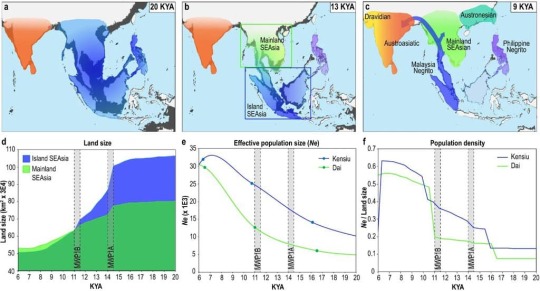
View On WordPress
0 notes